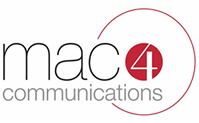
As a millennial, my generation grew up with computers and was exposed to Microsoft applications early on. I used PowerPoint to present various projects during my education. Now, I’m discovering that PowerPoint presentations have a critical role to play in organizations looking to communicate brand identity, key messages, and information to various internal stakeholders.
Tip: What I’ve learned is that great presentations align with the organization’s brand and follow the organization’s creative design standards and templates. Great content also aligns with the company’s brand, purpose, and vision, and conveys information and key messages in simple text with simple visuals.
The use of photos and images are as important as the text on the slide. Photos can be selected from internal online photo libraries or purchased from stock photo providers, like Getty, I-Stock, or Shutterstock, among others. Tip: The images must accurately illustrate the message of the slide to make the presentations meaningful and memorable. Graphics are also critical to every PowerPoint. For example, graphics can help divide different parts of the organization’s functions, or emphasize a specific function in which a partner organization may be especially interested. Graphics can illustrate data and metrics in a simple, visually appealing way. Tip: Too many images can draw the audience in a different direction than you intend and make each picture too small to see, rendering them useless. Tip: The most functional slides rarely exceed three or four images. Likewise, graphics should not be overcomplicated; they should help to illustrate the message, not clutter the slide.
While text, photos, and graphics are all important tools to deliver a well-communicated message, one should be wary of overcrowding slides; this gives the audience too much to focus on and takes focus away from the message being conveyed by the presenter. Tip: Keep you slide to no more than 50 words per slide. Let your audience listen to what the presenter is saying, not squinting to read to many words on the slide or too many graphics that are too hard to see. When putting text on a slide, one should ask: is this needed on the slide, or can this be communicated in the talk track or speaking points?
From paying close attention to the presentation development process at MAC4 and helping to proof and edit several of these decks, I’ve seen first-hand how our communications and design professionals work through several incarnations of each presentation, debating different pictures, paying attention to each detail of every graphic, proofreading and editing text to concisely and accurately communicate messages. I watch them work closely with clients to align messages until arriving at the final product. This honing and perfection of the content and layout ensures the most effective communication possible to the target audience and it seems to me is as close to perfection as possible.
Author: Michael LaBella

